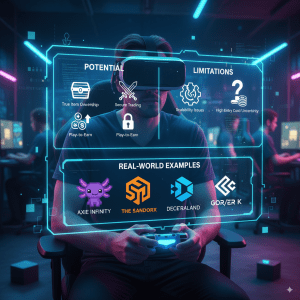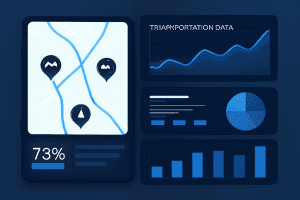Introduction
The retail sector is undergoing a digital revolution driven by the rapid adoption of machine learning (ML) and artificial intelligence (AI). From dynamic personalization to predictive inventory management, retailers of all sizes are leveraging ML to transform customer experiences, improve operations, and boost profitability. With global AI in retail expected to reach $23.3 billion by 2025 and hyper-personalization becoming a benchmark for success, machine learning is no longer a luxury—it’s a competitive necessity.
Hyper-Personalization: The New Retail Standard
Machine learning enables retailers to offer deeply personalized shopping experiences. By analyzing massive amounts of data—such as browsing history, purchase patterns, and social media activity—ML models predict consumer preferences before customers even realize them.
-
AI-powered Recommendation Engines: Platforms like Amazon and Netflix use ML to suggest tailored products and content, dramatically increasing engagement and sales.
-
Dynamic Content & Offers: In-store and online, ML customizes promotions and product displays to match individual tastes, driving greater conversion rates.
-
Customer Segmentation: ML clusters shoppers by behavior and interest, enabling more effective targeted marketing.
Stat: 75–80% of shoppers are more likely to buy when offered personalized experiences, and brands adopting this approach are seeing customer loyalty and revenue soar.
Predictive Analytics Drive Smart Inventory and Dynamic Pricing
Gone are the days of manual forecasting. Advanced ML algorithms analyze historical sales, seasonal trends, and even weather patterns to predict demand with remarkable accuracy. Retailers can:
-
Optimize Inventory: Minimize stockouts and reduce excess inventory, cutting costs and increasing fulfillment rates.
-
Dynamic Pricing Engines: Adjust prices in real time based on demand, competition, and buyer behavior, maximizing profits while staying competitive.
Case Example: REWE uses AI-driven demand forecasting to fine-tune inventory and reduce waste, while Amazon’s dynamic pricing adapts instantly to market fluctuations.
Smarter Fraud Detection and Risk Management
Retailers face major challenges from payment fraud and account takeovers. ML continuously analyzes transaction patterns to identify anomalies, stopping fraud in real time.
-
Fraud Detection: Spotting fake transactions and unauthorized activity before losses occur.
-
Reduced False Positives: ML learns over time, minimizing disruptions for genuine shoppers while raising the bar for would-be fraudsters.
Enhanced Search, Chatbots, and In-Store Automation
Machine learning’s impact goes beyond backend efficiency—it enhances customer engagement at every point.
-
Semantic Search Engines: ML understands context, delivering highly relevant search results and recommendations.
-
Chatbots & Virtual Assistants: 24/7 AI-powered help improves support, provides expert advice, and streamlines online and in-store processes.
-
Staff-less & Automated Stores: Innovations like Amazon Go use ML to enable checkout-free shopping, reshaping the physical retail space.
Optimizing Supply Chain and Logistics
ML streamlines the complex world of retail logistics:
-
Route Optimization: Reduces delivery times and shipping costs.
-
Demand Forecasting: Predicts regional demand spikes, ensuring the right stock is in the right place.
-
Supplier Collaboration: Shares insights instantly, keeping partners aligned on inventory and fulfillment.
Real-World Impact: Retail Success Stories
-
Walmart Realm: Uses AI to adapt virtual stores and enhance the shopping journey for each customer.
-
H&M: Employs ML for demand prediction and store optimization—cutting excess stock by 20% and strategically opening locations.
-
Tesco: Offers healthier food suggestions by analyzing purchase histories, encouraging better choices among shoppers.
Key Benefits of Machine Learning in Retail
| Benefit | Description |
|---|---|
| Personalization | Tailors recommendations and promotions to individual shoppers. |
| Inventory Optimization | Accurately forecasts demand, reducing stockouts and surplus. |
| Dynamic Pricing | Updates prices in real time to balance profit and competitiveness. |
| Fraud Prevention | Detects and prevents unauthorized transactions. |
| Customer Insights | Uncovers deep patterns in buying behavior for targeted marketing. |
| Operational Efficiency | Automates repetitive tasks and improves overall workflow. |
Challenges and Future Trends
Challenges:
-
Data Privacy & Security: ML systems handle sensitive customer data, making compliance and security paramount.
-
Integration: Merging new ML tech with legacy retail systems can be complex.
-
Talent Gap: Building in-house ML capabilities remains a challenge for smaller retailers.
Trends for 2025 and Beyond:
-
Hyper-personalization will become a baseline, not a differentiator.
-
Voice commerce and conversational AI will drive new user experiences.
-
ML will power sustainability efforts through waste reduction and optimized logistics.
Conclusion
Machine learning is fundamentally redefining the retail sector—empowering businesses to anticipate trends, create individualized customer journeys, combat fraud, and optimize every step from supply chain to checkout. Retailers that invest in ML-driven transformation today are poised to win tomorrow’s market, building resilience, agility, and customer loyalty in a fiercely competitive landscape.
FAQ
How does machine learning personalize retail?
By analyzing a shopper’s data and behavior, ML models recommend products, tailor offers, and create a seamless, relevant experience—both online and in-store.
How does ML help with inventory management?
ML uses historical and real-time data to forecast demand, reducing overstock and preventing stockouts.
Can machine learning stop fraud in retail?
Yes, by monitoring transactions for unusual patterns, ML instantly detects and stops fraudulent behavior, lowering losses.
What are the key challenges for adopting ML in retail?
Data privacy, system integration with legacy tools, and the shortage of skilled talent are major challenges for many retailers.
Is ML only for large retailers?
No. While giants lead adoption, scalable ML tools and cloud solutions are available for retailers of all sizes30 tags











